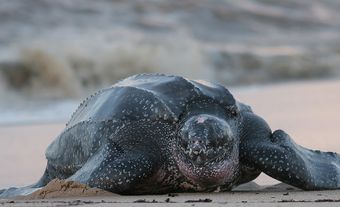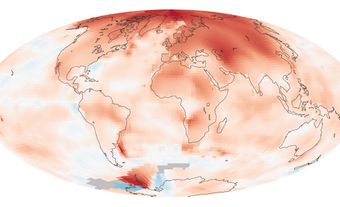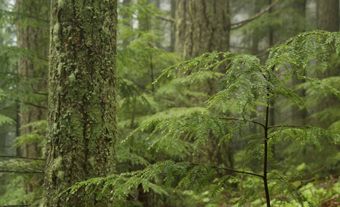The environmental movement seeks to protect the natural world and promote sustainable living. It had its beginnings in the conservation efforts of the early 1900s. During this time, conservationists aimed to slow the rapid depletion of Canadian resources in favour of more regulated management. Many scholars divide the evolution of the environmental movement into “waves.” These waves are periods in time easily characterized by certain themes. While the number of waves and their characterization may differ from scholar to scholar, they’re often defined as follows: The first wave focused on conservation; the second, pollution; the third, the professionalization of environmental groups; and the fourth, climate change.
Indigenous Peoples
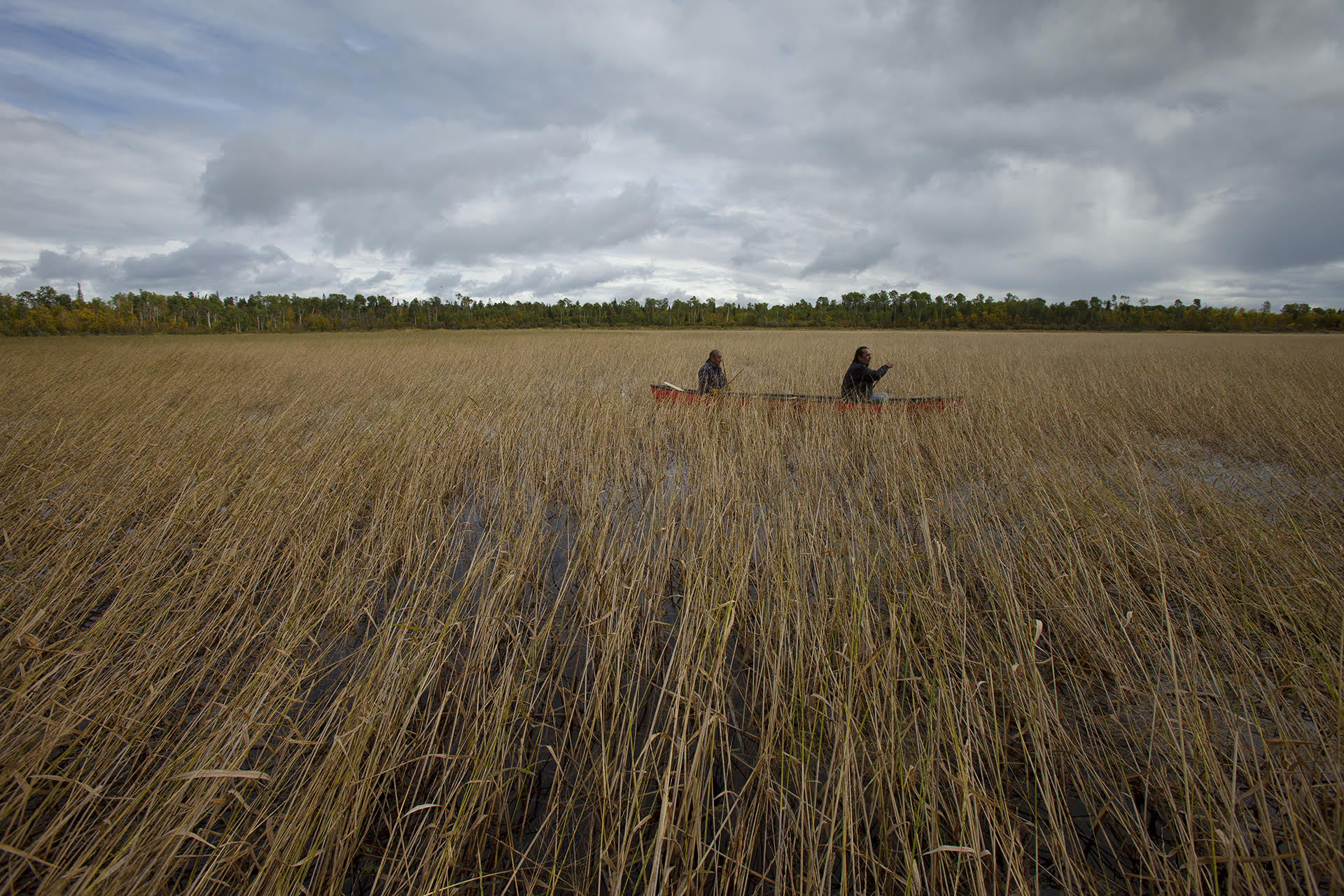
For centuries Indigenous peoples lived off the land causing little to no destruction. Many Indigenous peoples believe that human beings are part of an interconnected environment. There is no superiority over the land, plants or animals they share space with. Such practices as clearing areas for settlement and agriculture, or driving game by lighting fires, would have affected the natural environment. However, there is little evidence that these activities caused any long-term damage. Furthermore, First Nations and Inuit family groups often moved their settlements to new areas for better hunting. This allowed the regions left behind to grow back and repopulate with wildlife. For these reasons, there were few large-scale conservation problems before the first permanent European settlement in the 17th century.
Early Influences
Upon their arrival, explorers and European colonists began to catalogue Canada’s natural history. These studies laid the foundation for botany, geology, paleontology and zoology in Canada. Notable among these early naturalists were Samuel de Champlain. Champlain kept detailed accounts of the flora, fauna and climate he was experiencing for the first time. Other examples include pioneer writer Catharine Parr Trail and later, Frère Marie-Victorin.

Initially, European scientific traditions shaped the views of these early naturalists. Writers such as Jean-Jacques Rousseau, William Wordsworth, Lord Byron, and Archibald Belaney and his wife, Anahareo, were also influential.
American thinkers had an even greater effect. These thinkers included ornithologist John James Audubon, who visited Canada in the 1830s, and writers James Fenimore Cooper, Ralph Waldo Emerson and Henry David Thoreau. American conservationists John Muir, founder of the Sierra Club (1892), and Gifford Pinchot were also significant.
First Wave: Late 1800s-Early 1900s
Initially, European colonists viewed North America’s vast wilderness as inexhaustible. However, as the landscape shifted from forest to farmland, efforts to preserve the continent’s natural resources grew. These conservationist efforts came to characterize North America’s first wave of environmentalism.
Individuals with close ties to the forestry industry initiated many of Canada’s early conservation efforts. These lumbermen witnessed the rapid depletion of Canadian forests. They advocated for controlled harvesting and reserved areas for future use. In 1900, Henri-Gustave Joly de Lotbinière, former premier of Quebec, led the establishment of the Canadian Forestry Association. (See also Forestry; Lumberjacks.)
Despite these early efforts, Americans were generally ahead of Canadians in organizing around conservationist goals. This was likely because there was more extensive settlement in the United States. This settlement demonstrated the harm that civilization could do. In Canada, the pioneer mentality of “unlimited” forests, lakes and wildlife persisted longer. It was American President Theodore Roosevelt, for example, who invited Mexico and Canada to join the United States at the North American Conservation Conference in 1909. The conference led to the establishment of Canada’s Commission of Conservation. Clifford Sifton, former minister of the interior, chaired the commission. It made recommendations that foreshadowed the tenets of more modern environmentalism. They included not overcutting forests, the use of organic agricultural fertilizers and recycling.
First Wave: National and Provincial Parks
The development of national parks also illustrates the difference between early American and Canadian conservation action. For example, the first American national park, Yellowstone, opened in 1872. By comparison, while the first Canadian national park, Banff, wasn’t formed until 1885. Moreover, the purpose of Banff (as well as Yoho and Glacier national parks, both created in 1886) was more economic than conservationist. In creating these Rocky Mountain reserves, the government aimed to generate revenue and promote tourist travel along the newly minted Canadian Pacific Railway.
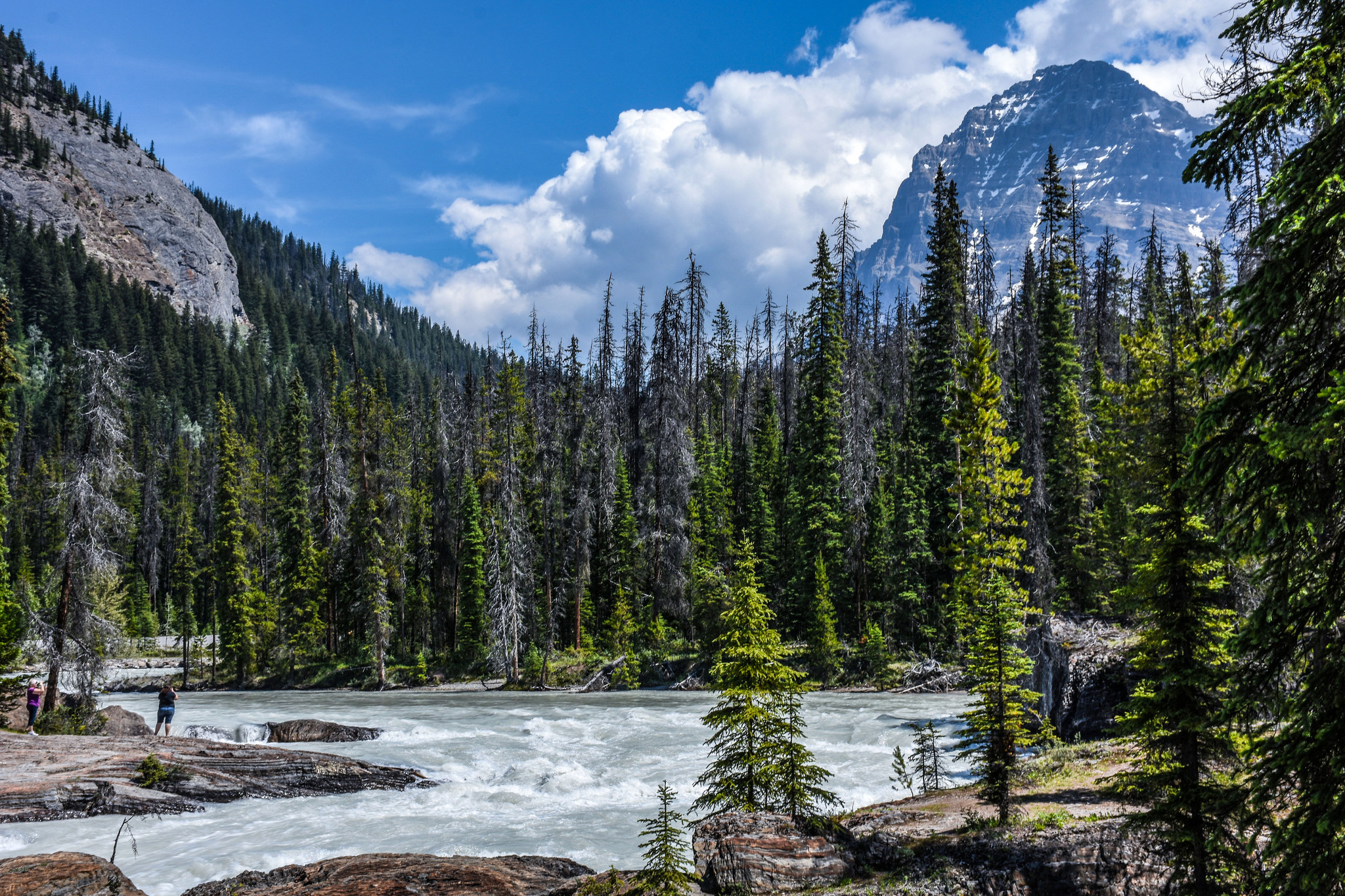
In 1916, the United States passed the National Park Service Act. The Act stated that parks were to be “unimpaired for the enjoyment of future generations.” As with the development of parks themselves, Canada also lagged behind the States in adopting this type of language. Finally, in 1930, the Canadian National Parks Act incorporated this type of wording. In this respect, 1930 marked a turning point in Canadian conservation thought.
In the area of wildlife conservation, however, Canada did create several protected areas quite early (see Wildlife Conservation and Management). For example, the first federal bird sanctuary in North America was created in Saskatchewan in 1887. By 1889, the plains bison had been reduced from about 60 million to less than 2,000 animals. So, in 1907 and 1909, the government purchased about 700 bison and placed them in national parks. In addition, between 1910 and 1920, three areas were set aside as reserves for antelope in Alberta and Saskatchewan (though they were later abolished).
In 1911, Canada formally established a parks branch. James Harkin was appointed the Dominion parks commissioner. The American conservation movement deeply influenced Harkin. He was probably the first leading Canadian to argue for protection of wilderness for its own sake. Canada’s first significant international conservation effort was a treaty with the United States (1916) for the protection of migratory birds.
Until 1945, conservation in Canada focused on establishing national and provincial parks in remote areas. With increased urbanization and the proliferation of the automobile, parks increasingly became an escape for city dwellers. Emphasis shifted to expanding parks for recreational purposes by creating hiking trails, camping grounds and swimming facilities.
Second Wave: 1960s–1970s
The 1960s marked a different era for conservation and the environmental movement in Canada. Conservationist attitudes were no longer restricted primarily to naturalist groups. In addition to using resources wisely, a growing number of Canadians became concerned about the effects of human activity on the environment.
Second Wave: Environmentalism

During the 1960s, concern about pollution became a major public issue. Environmentalists, particularly those in urban areas, organized specialized groups. These groups included the Society for the Promotion of Environmental Conservation in British Columbia (now Society Promoting Environmental Conservation, or SPEC), Pollution Probe in Ontario, and the Ecology Action Centre in the Maritimes. Scientists such as Donald Chant led these groups. Issues such as air pollution, water pollution, hazardous wastes and the careless use of pesticides deeply concerned Chant. In 1971, Greenpeace was founded in Vancouver. The organization soon became a high-profile, international activist force for various environmental causes.
During the 1970s, Canadian environmentalists also focused on major energy projects. These projects included the James Bay Project in Quebec and the Mackenzie Valley Pipeline in the Northwest Territories and Yukon. In each case, environmentalists brought the project’s ecological impacts, as well as its impact on Indigenous communities (Cree and Inuit in Quebec; Dene, Inuit and Métis in the territories) to the fore. While the James Bay Project went through, the pipeline was cancelled.
Second Wave: Conservation
The nature conservation movement received a boost from the environmentalism of the 1960s. The Canadian Wildlife Federation was established in 1961, the National and Provincial Parks Association of Canada (now the Canadian Parks and Wilderness Society) in 1963, the World Wildlife Fund Canada in 1967 and the Canadian arm of the Sierra Club in 1970. In addition, in 1971, the Canadian Audubon Society and several of its affiliates established the Canadian Nature Federation (now Nature Canada), a national assembly of naturalist groups from across the country. Scientific biological associations and groups traditionally less active in conservation issues, such as game and fish associations, also increased their emphasis on environmental issues.
During this period, the concern for nature conservation centred on preserving wilderness and protecting unique areas or ecosystems as ecological reserves. Each province experienced a burst in the growth of local groups focusing on local conservation and environmental issues. Provincial naturalist and conservation federations became increasingly active and vocal. In a single decade, federal and provincial governments established ministries or departments of the environment, environmental protection Acts and environmental assessment legislation (see Environmental Impact Assessment).
Acts to protect endangered species, such as that passed in Ontario in 1971, were unique in the world because they sought to protect rare or endangered species of all plants and animals (including insects). In 1978, the intergovernmental Committee on the Status of Endangered Wildlife in Canada (COSEWIC) began to define a national list of species at risk (see alsoEndangered Animals in Canada; Endangered Plants in Canada).
In 1972, the United Nations Conference on the Human Environment convened in Stockholm. Canada was well represented. As a result, Canadian conservation efforts began to include participation in certain international agencies. These agencies included the Convention on International Trade in Endangered Species, and the International Union for the Conservation of Nature and Natural Resources. As awareness grew that all people depend on clear air, water and healthy ecosystems, Canadians began to see environmental concerns in a global context.
Third Wave: 1980s–1990s

Environmentalism at the end of the 20th century continued to focus on issues of global concern. Whereas earlier environmentalists were wary of business, environmentalists during this period were more willing to work with corporate culture in order to find solutions to environmental problems. In addition, non-governmental organizations (NGOs) began to play a stronger role in the environmental movement in Canada.
For example, the Canadian Coalition on Acid Rain (1981–91) helped obtain agreements between Canada and the United States to reduce sulphur dioxide and nitrogen oxide emissions (see Acid Rain). In 1985, Ducks Unlimited launched the North American Waterfowl Management Plan. The plan was a $1.5 billion, 15-year effort to conserve wetlands in Canada. In late 1989, World Wildlife Fund Canada launched its 10-year national Endangered Spaces Campaign. The campaign aimed to complete a network of protected areas representing all terrestrial natural regions of Canada. Although the organization did not reach its goal, the campaign helped establish of over 1,000 new parks, wilderness areas and nature reserves. This effort more than doubled the number of protected areas across the country.
Did you know?
On 16 September 1987, 24 countries and the European Economic Community signed the Montreal Protocol in Montreal, Quebec. Sometimes referred to by its formal title, the Montreal Protocol on Substances that Deplete the Ozone Layer, the agreement regulates the consumption and production of approximately 100 man-made, ozone-depleting chemicals. By fall of 2009 it had been signed by every recognized nation on Earth, amounting to 197 signatories in total. To date, the Montreal Protocol is the only United Nations treaty that every country in the world has ratified.
Canadian environmentalists also made huge gains through multi-party negotiations and agreements. For example, beginning in 1994, environmental groups focussed their efforts on British Columbia’s Great Bear Rainforest. They worked with companies such as Home Depot and Ikea to put pressure on logging companies. In 2006, these groups, along with multiple First Nations and the BC government, signed the Great Bear Rainforest Agreement. The agreement laid out measures to protect the forest through sustainable logging practices.
Finally, this period marked the movement’s formal entry into politics with the founding of the Green Party of Canada in 1983. Since then, the party has witnessed major growth. In 2004, Green Party candidates ran in every federal riding for the first time. In 2011, leader Elizabeth May became the first Green Party member to be elected to the House of Commons.
Fourth Wave: 2000s
At the turn of the 21st century, climate change emerged as an overarching global and national concern for environmental activists and nature conservationists alike. In the late 1980s, Canada was a leader in terms of climate change action. In 1988, for example, Canada hosted the World Conference on the Changing Atmosphere in Toronto, one of the earliest global meetings on the topic.
Climate change drew international attention with the adoption of the Kyoto Protocol in 1997. The protocol required nations to reduce greenhouse gas emissions — the gases responsible for climate change — by a certain amount. With the notable exceptions of the United States, Australia and Monaco, every industrialized country ratified the agreement. Canada ratified the agreement in 2002 under the leadership of Jean Chrétien’s Liberals.
In 2011, Canada withdrew from the agreement. The government of the day, Stephen Harper’s Conservative Party, cited a number of reasons for withdrawing, including how far Canada lagged behind the protocol’s targets.
In the years that followed, the same administration made it increasingly difficult for environmentalists and their organizations to operate in Canada. Scientific institutions were eliminated or had their federal government funding reduced, and the public’s access to scientific research became increasingly limited. For example, environmental charities faced an increasing number of federal government audits, a time-consuming process that slowed their work and put them at risk of losing their charitable status. Critics also accused the government of trying to put a chill on environmental protest by branding environmental groups as radicals or potential threats to national security. For example, a 2012 anti-terrorism strategy referred to environmental grievances as a source of domestic extremism.
“Environmentalism has failed,” David Suzuki wrote in a 2012 blog post. Against the backdrop of decreasing government support for environmental initiatives, the internationally renowned Canadian environmentalist lamented the global emphasis on “economy over environment.” Two years later he launched the Blue Dot campaign, an initiative aimed at having the right to a healthy environment recognized by all levels of government and enshrined in the Canadian Charter of Rights and Freedoms.
Despite the setbacks articulated by Suzuki, certain initiatives instigated during environmentalism’s third wave now have a seemingly permanent place in Canadian society. Environmentally friendly products, for example, are often found on the shelves of grocery stores, and local food movements have taken hold in many communities across the country. Provinces have also made individual efforts at combatting climate change. For example, in 2014, Ontario closed the doors on its last coal-fired power plant, having replaced each with emission-free or lower-emission electricity facilities. Similarly, in 2008, British Columbia instituted a carbon tax (an amount of money owed to the government for each tonne of greenhouse gases a company or individual produces). It was the first jurisdiction in North America to do so.
In October 2015, Justin Trudeau was elected prime minister. He made climate change a focus of the first few months of his leadership, signing the Paris Agreement in April 2016. The agreement, signed by nearly 200 countries, outlines the ways in which the international community will cooperate to keep global warming to 1.5°C above pre-industrial levels. Trudeau also changed the name of Environment Canada to Environment and Climate Change Canada — an important semantic shift for many environmentalists.
Fourth Wave: Youth Movement
Youth are also playing an increasing role in environmental activism. In 2005, Montreal hosted the United Nations’ 11th annual Conference of the Parties (COP). During COP meetings, signatories to the United Nations Framework Convention on Climate Change meet to discuss their progress in combatting climate warming. Prior to COP11, youth from around the world met in Montreal. Together they created the first Conference of Youth. These conferences now take place annually in advance of the COP meeting.

In 2016, then 12-year-old Autumn Peltier attended the annual meeting of the Assembly of First Nations. Peltier is a water rights advocate and member of the Wiikwemkoong First Nation. At the meeting, Peltier confronted Prime Minister Trudeau on his government’s environmental policies. In particular, she drew attention to Trudeau’s support of pipelines and the risk they pose to local waterways. Following the passing of her great-aunt Josephine Mandamin in February 2019, Peltier was named Chief Water Commissioner of the Anishinabek Nation.
In August 2018, Swedish teenager Greta Thunberg protested in front of her country’s parliament every school day for three weeks. Thunberg’s strike was against Sweden’s lack of action in fighting climate change. Later that year, Thunberg spoke at the United Nations Climate Change Conference (COP24). Thunberg’s activism inspired the Fridays For Future movement. As part of this movement, students around the world, including in Canada, leave school on Fridays to demand climate action. On 27 September 2019, Thunberg met with Justin Trudeau in Montreal, ahead of a climate change rally. She told the prime minister he is not doing enough in the fight against climate change, the same message she gives to every politician she speaks to.

 Share on Facebook
Share on Facebook Share on X
Share on X Share by Email
Share by Email Share on Google Classroom
Share on Google Classroom
